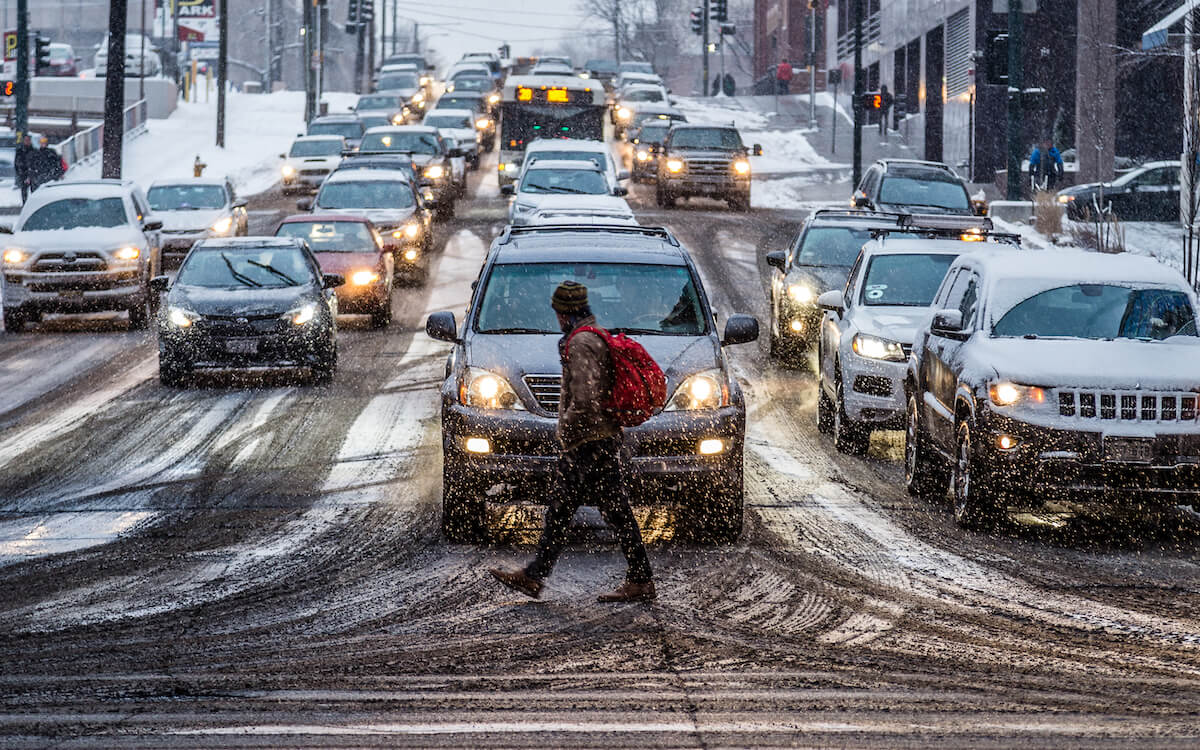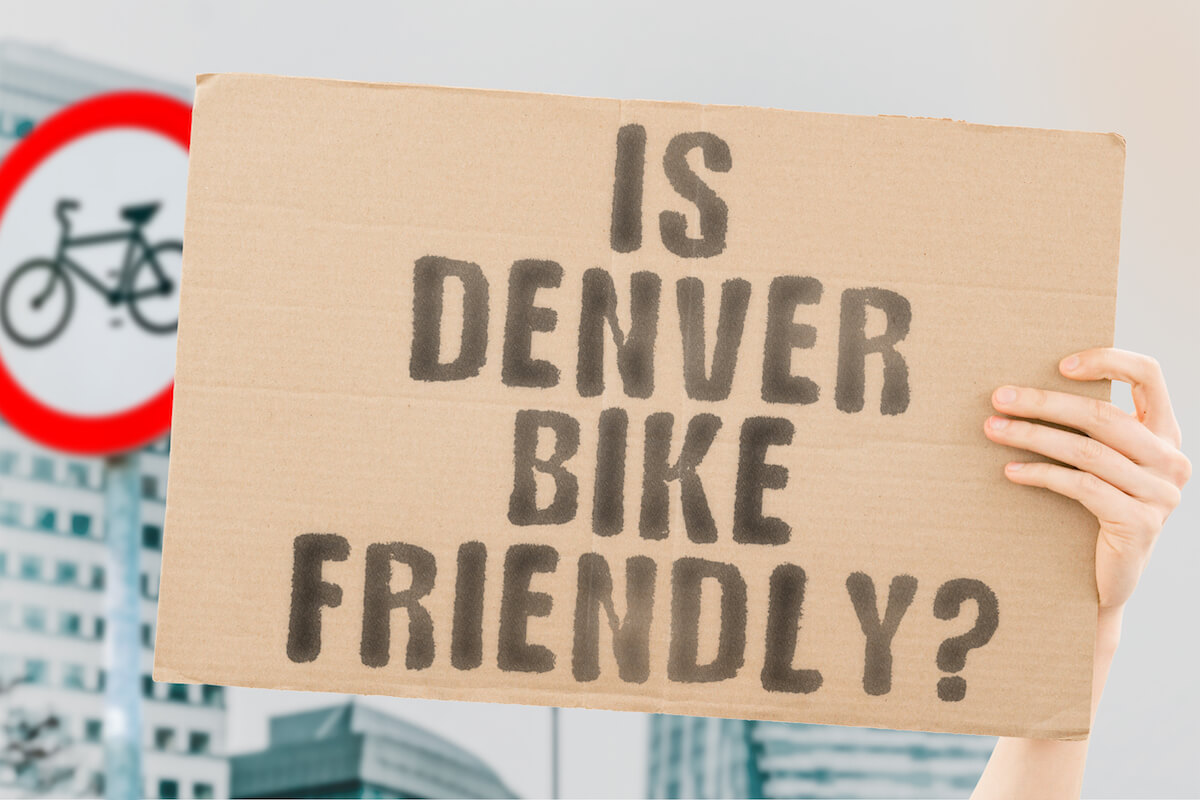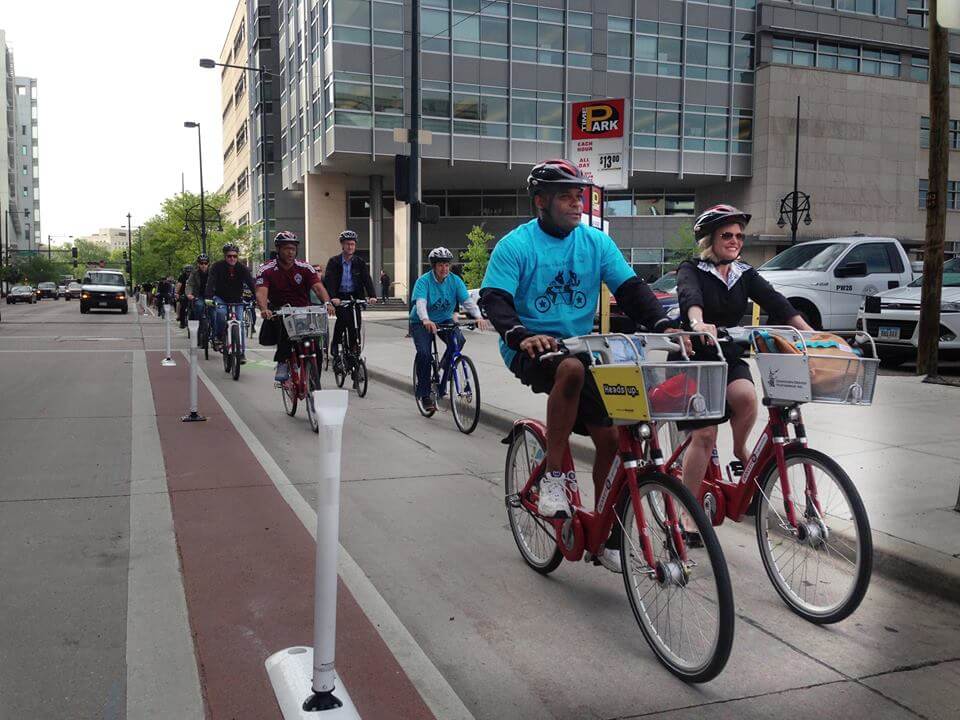victims for over 25 years.
Denver’s Vision Zero Plan: A (Struggling) Pathway to Safer Streets
Denver has long struggled with traffic safety and high fatality rates. In an effort to tackle this issue head-on, Denver launched its Vision Zero plan in 2017. The ambitious initiative aimed to eliminate traffic fatalities and severe injuries by 2030, emphasizing a comprehensive approach that includes infrastructure improvements, policy changes, and community engagement.
While the program has achieved notable successes, it hasn’t exactly been a crowning achievement. According to Denverite: “Both deaths and serious injuries have risen significantly since the campaign was launched in 2017. Eighty-four people died on Denver’s streets last year, city data show, and there were 386 crashes that resulted in serious injuries.”
Recently, Denver’s mayor and city officials unveiled new plans to revitalize the Vision Zero mission and restore hope for a safer future. So, I thought this was a perfect time to take another look at Vision Zero in Denver and to share some of the newest adjustments being made to save lives.
A History of Denver’s Vision Zero Plan

Denver’s Vision Zero plan was inspired by a Swedish initiative of the same name, which began in the late 1990s. The philosophy behind Vision Zero recognizes that traffic deaths and injuries are not inevitable but are rather the result of a flawed system that can be redesigned. In 2017, Denver joined other progressive cities worldwide by adopting this visionary approach.
While the specific implementation may vary between cities, there are several fundamental concepts that underpin most Vision Zero programs. Here are some of the key principles:
- Zero Traffic Fatalities and Severe Injuries: The central goal of Vision Zero is to achieve zero traffic fatalities and severe injuries. This overarching objective reflects the belief that these incidents are preventable, and that any loss of life or serious injury is unacceptable.
- Systematic Approach: Vision Zero takes a systemic approach to traffic safety, recognizing that it is the responsibility of transportation planners, engineers, policymakers, law enforcement, and the community as a whole to create a safe transportation system. It emphasizes collaboration and coordination to address the root causes of crashes.
- Human-Centered Design: Vision Zero places a strong emphasis on human-centered design principles. It acknowledges that human error is inevitable and seeks to create forgiving road systems that account for mistakes and prioritize safety for all road users, including vulnerable road users like pedestrians, cyclists, and motorists.
- Safe Roadways for All: Vision Zero aims to ensure that all road users, regardless of their mode of transportation, have access to safe roadways. This includes designing streets that accommodate various modes of transportation, such as dedicated bike lanes, pedestrian-friendly intersections, and public transit enhancements.
- Data-Driven Decision Making: Vision Zero programs rely on data analysis to identify high-risk areas, crash patterns, and contributing factors to prioritize interventions. This data-driven approach allows for evidence-based decision making and targeted implementation of safety measures.
- Safe Speeds: Speed is a critical factor in traffic safety. Vision Zero programs advocate for setting safe speed limits and employing traffic calming measures, such as speed bumps, traffic circles, and narrower lanes, to encourage compliance with speed limits and to reduce the severity of crashes.
- Education and Public Outreach: Vision Zero recognizes the importance of educating the public about safe behaviors on the road. Community engagement, public awareness campaigns, and educational programs are key components to foster a culture of traffic safety and to promote responsible road use.
- Enforcement and Legislation: Vision Zero programs often involve strengthening traffic laws, enhancing enforcement efforts, and introducing stricter penalties for traffic violations. This combination of enforcement and legislation aims to deter risky behaviors and ensure compliance with traffic rules.
- Continuous Evaluation and Improvement: Vision Zero is an iterative process that involves ongoing evaluation and refinement of strategies. Monitoring progress, analyzing outcomes, and making adjustments based on the data collected are crucial for the success of Vision Zero programs.
Highlights and Lowlights of Denver’s Vision Zero

Since its inception, Denver’s Vision Zero plan has made significant strides towards improving traffic safety. The city has implemented numerous engineering enhancements, such as redesigned intersections, improved pedestrian crossings, and increased protected bike lanes. These infrastructure improvements have helped to mitigate potential hazards and create a safer environment for all road users.
Additionally, the Vision Zero program has focused on educating the public and raising awareness about traffic safety. Extensive public outreach campaigns, school programs, and community events have played a pivotal role in fostering a culture of responsibility and mutual respect among road users.
Despite these achievements, Denver has experienced some setbacks on its journey toward zero traffic fatalities. Various factors, including population growth, distracted driving, and an increase in the number of vehicles on the road, have contributed to a rise in traffic-related incidents. This unfortunate trend was particularly evident in 2022, making it a difficult year for traffic fatalities in Denver.
The Miserable Year of 2022 in Denver
According to Westword, in an article titled, Denver Hits Record for Traffic Fatalities in 2022: “Updated figures provided by the Denver Police Department reveal that traffic fatalities in the city hit 84 in 2022, matching the modern record set the previous year… This performance indicates how far Denver is from achieving the goal of Vision Zero, an action plan launched in 2017 with the stated goal of zero traffic-related deaths and serious injuries by 2030.”
Clearly, things are headed in the wrong direction.
New Vision Zero Plans and Initiatives in Denver

Photo Courtesy of the City and County of Denver
In response to this alarming rise in traffic fatalities, Denver’s mayor Michael Hancock and city officials have proposed new plans to reinvigorate the Vision Zero mission. These plans aim to recalibrate the program and address the emerging challenges of a rapidly evolving transportation landscape.
One key aspect of the new strategy is the integration of advanced technology to improve traffic safety. This includes the implementation of intelligent traffic management systems, smart traffic lights, and enhanced data analytics to identify high-risk areas and devise targeted interventions.
Leveraging technology can enhance the efficiency of traffic flow, reduce congestion, and ultimately improve safety.
Additionally, the city plans to strengthen collaboration between law enforcement agencies, transportation departments, and community organizations. By fostering partnerships and pooling resources, Denver aims to enhance enforcement efforts, improve driver education, and increase community engagement in promoting safe behaviors on the roads.
The new plans also emphasize the importance of pedestrian and cyclist safety. The city aims to expand and enhance its network of protected bike lanes and pedestrian-friendly infrastructure, promoting active transportation as a safe and sustainable alternative to driving.
Additionally, educational campaigns will be launched to raise awareness about sharing the road and respecting vulnerable road users.
But the proposal that’s gotten the most attention is to reduce neighborhood speed limits to 20 miles per hour. The change is already underway, with the city changing signs across neighborhoods, particularly near busier highway interchanges.
Denver’s Vision Zero plan has set forth an ambitious goal of eliminating traffic fatalities and severe injuries by 2030. While the year 2023 has presented challenges and setbacks, it is vital to view them as opportunities for growth and improvement.
Through a comprehensive approach that includes infrastructure improvements, policy changes, and community engagement, Denver is determined to create safer streets for all residents and visitors.
By implementing new plans and initiatives, the city is taking decisive steps towards revitalizing the Vision Zero mission and achieving a future with zero traffic fatalities.
If you or a loved one has been injured or killed in a Denver car crash, contact me for a free consultation. Call or text 303-388-5304
Free Consultation
Search For
Recent Articles
- Are all motorcycles created equal?
- Frequently Asked Questions about Personal Injury Attorneys
- How Do Personal Injury Attorneys Calculate Future Medical Expenses in a Car Crash Settlement?
- Ways to Increase Your Visibility When Riding Your Bicycle in Denver
- 5 Reasons to Hire a Personal Injury Attorney if a Loved One Is Injured
Categories
- Arvada
- Aurora
- Auto Accident eBook
- Auto Insurance
- Bicycle
- Bicycle/Motorcycle Accidents
- Bodily injury
- Car accidents
- Centennial
- Colorado
- Colorado Legislature
- community
- Concussion
- Denver
- distracted driving
- DUI Accidents
- Englewood
- Events
- Flood Insurance
- Fort Collins
- Highlands Ranch
- Hit and Run
- In The News
- insurance companies
- Lakewood
- Littleton
- Marijuana DUI
- Motorcycle Accidents
- Motorcycle Insurance
- Motorcycle Law eBook
- Motorcycles
- Newsletter
- Pedestrian
- Personal Injury Law
- Safe Driving
- Safety
- Scooters
- technology
- Thornton
- Tips
- Uncategorized
- vibrio vulnificus bacteria
- Videos
- Westminster
- Winter Driving
Archive
- March 2024
- February 2024
- January 2024
- December 2023
- November 2023
- October 2023
- September 2023
- August 2023
- July 2023
- June 2023
- May 2023
- April 2023
- March 2023
- February 2023
- January 2023
- November 2022
- September 2022
- April 2022
- March 2022
- February 2022
- January 2022
- December 2021
- November 2021
- October 2021
- September 2021
- August 2021
- July 2021
- June 2021
- May 2021
- April 2021
- January 2021
- December 2020
- November 2020
- October 2020
- September 2020
- August 2020
- July 2020
- June 2020
- May 2020
- April 2020
- March 2020
- February 2020
- January 2020
- December 2019
- November 2019
- October 2019
- September 2019
- August 2019
- July 2019
- June 2019
- May 2019
- March 2019
- February 2019
- January 2019
- December 2018
- November 2018
- October 2018
- September 2018
- August 2018
- July 2018
- June 2018
- May 2018
- April 2018
- March 2018
- February 2018
- January 2018
- December 2017
- November 2017
- October 2017
- September 2017
- August 2017
- July 2017
- June 2017
- May 2017
- April 2017
- March 2017
- February 2017
- January 2017
- December 2016
- November 2016
- October 2016
- September 2016
- August 2016
- July 2016
- June 2016
- May 2016
- April 2016
- March 2016
- February 2016
- January 2016
- December 2015
- November 2015
- October 2015
- September 2015
- August 2015
- July 2015
- June 2015
- May 2015
- April 2015
- February 2015
- December 2014
- November 2014
- October 2014
- September 2014
- July 2014
- June 2014
- May 2014
- April 2014
- March 2014
- February 2014
- January 2014
- October 2013
- October 2012
- September 2012
- August 2012
- July 2012
- February 2012
- August 2011
- March 2011
- October 2010